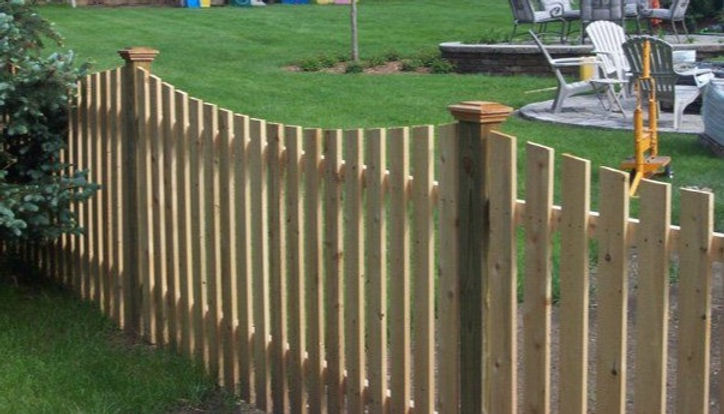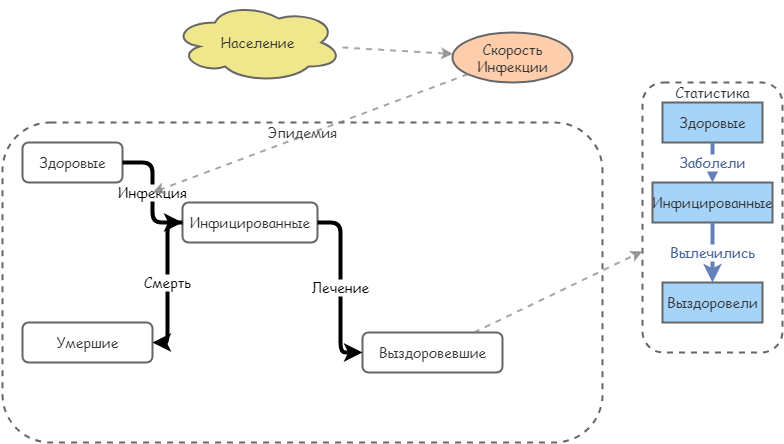How To Plant And Maintain A Beautiful Living Fence

Table of Contents
Choosing the Right Plants for Your Living Fence
Selecting the right plants is crucial for a successful living fence. Consider these factors when choosing your living fence plants: your climate, soil type, desired height and density, and sunlight exposure. The best plants for a living fence will thrive in your specific conditions.
- Climate: Match your plant choices to your local climate. Hardy plants that can withstand extreme temperatures and weather conditions are essential.
- Soil Type: Determine your soil's pH level and drainage capabilities. Amend the soil with compost to improve its structure and fertility if needed.
- Desired Height and Density: Consider how tall and dense you want your living fence to be. Fast-growing living fence plants can quickly create a screen, while slower-growing varieties may need more time. Think about whether you want a dense, impenetrable barrier or a more open, airy screen.
- Sunlight Exposure: Choose plants that thrive in the amount of sunlight your chosen area receives – full sun, partial shade, or full shade.
Here are some popular options for different needs:
- Evergreen options for year-round privacy: Leyland Cypress, Arborvitae, Holly. These provide consistent screening throughout the year, making them ideal for privacy fences.
- Flowering options: Lilac, Rose bushes (consider thorny varieties for added security), Honeysuckle. These add bursts of color and fragrance to your living fence.
- Fast-growing plants: Bamboo, Willow, some varieties of Poplar. These options offer quick results but often require more frequent maintenance.
- Native plants: Research plants native to your region. These are often well-suited to the local climate and require less maintenance. They also support local ecosystems.
- Consult a local nursery: Seek expert advice from your local nursery. They can provide personalized recommendations based on your specific conditions and preferences for living fence plants.
Planting Your Living Fence: A Step-by-Step Guide
Planting your living fence correctly is key to its long-term health and success. Follow these steps for a successful living fence installation:
- Prepare the soil: Till the soil to a depth of at least 12 inches, removing rocks and weeds. Amend the soil with compost to improve drainage and fertility. A well-prepared soil bed is essential for healthy plant growth.
- Dig holes: Dig individual holes slightly larger than the root ball of each plant. Ensure adequate spacing between plants – this will prevent overcrowding and allow for proper growth.
- Space plants appropriately: Space plants according to their mature size, as listed on plant tags or in plant guides. Overcrowding can lead to competition for resources and reduced growth.
- Planting techniques: Gently loosen the roots before planting to encourage better root establishment. Place the plant in the hole, ensuring the top of the root ball is level with the ground. Fill the hole with soil and gently firm it around the plant.
- Water thoroughly: Water thoroughly after planting and regularly thereafter, especially during dry periods. Consistent watering is crucial, particularly during the establishment phase.
- Add mulch: Consider adding a layer of mulch (2-3 inches) around the plants to retain moisture, suppress weeds, and regulate soil temperature.
Maintaining Your Living Fence for Optimal Growth
Regular maintenance ensures the long-term health and beauty of your living fence. This includes watering, fertilizing, pruning, and pest and disease control.
- Watering: Water deeply and regularly, especially during dry periods. Aim for consistent moisture, but avoid overwatering, which can lead to root rot.
- Fertilizing: Fertilize annually in spring using a balanced fertilizer appropriate for your chosen plant type. Follow the fertilizer instructions carefully.
- Pruning: Regular pruning is essential for maintaining the shape, size, and density of your living fence. Remove dead or damaged branches, and trim to maintain the desired shape. Learn more about specific pruning techniques below.
- Pest and disease control: Inspect your living fence regularly for signs of pests or diseases. Address any issues promptly using appropriate organic or chemical control methods. Early detection is key to effective pest and disease management. Consider using organic pest control methods whenever possible to protect beneficial insects.
Pruning Techniques for a Living Fence
Proper pruning techniques are crucial for maintaining a healthy and attractive living fence. The best time to prune varies depending on the plant type. Here are a few techniques:
- Hedging: This involves trimming the sides and top of the fence to create a uniform, neat appearance. Use sharp shears for a clean cut.
- Shaping: For less formal fences, you can shape the plants to create curves or other interesting designs. This technique often involves selective pruning of individual branches.
- Thinning: This technique involves removing some branches entirely to improve air circulation and sunlight penetration. It's particularly helpful for dense fences.
- Consult resources: Always refer to specific pruning guidelines for your chosen plant species to avoid damaging the plants.
Troubleshooting Common Living Fence Problems
Even with proper care, your living fence may encounter some challenges.
- Pest infestations: Identify common pests affecting your plants (e.g., aphids, spider mites). Use appropriate pest control methods, starting with organic options whenever possible.
- Diseases: Identify any signs of disease (e.g., leaf spots, wilting). Consult with a local arborist or gardening expert for diagnosis and treatment recommendations.
- Nutrient deficiencies: Perform a soil test to identify any nutrient deficiencies. Amend the soil with appropriate fertilizers to correct imbalances.
- Consult experts: If you're facing persistent problems, don't hesitate to consult a local arborist or experienced gardener for expert advice.
Conclusion
Creating and maintaining a beautiful living fence adds significant curb appeal, privacy, and environmental benefits to your property. By carefully selecting plants, following proper planting techniques, and establishing a consistent maintenance schedule, you can enjoy years of beauty and privacy from your thriving living fence. A living fence is a rewarding project that enhances both your home and the environment.
Ready to transform your landscape with a stunning living fence? Start planning your dream living fence today! Research the best plants for your region and begin planting your own natural, beautiful privacy screen. Learn more about specific plant care and maintenance techniques by exploring our other resources on [link to related articles/resources].

Featured Posts
-
 Grab Nike Air Max Excee At 57 Flash Sale
May 29, 2025
Grab Nike Air Max Excee At 57 Flash Sale
May 29, 2025 -
 Man Utds Pursuit Of Barcelona And Real Madrids Free Transfer Target
May 29, 2025
Man Utds Pursuit Of Barcelona And Real Madrids Free Transfer Target
May 29, 2025 -
 Starbase Le Futur De Space X Se Construit Au Texas
May 29, 2025
Starbase Le Futur De Space X Se Construit Au Texas
May 29, 2025 -
 League Of Legends Arcane 4 K Blu Ray Steelbook 50 Off On Amazon Now
May 29, 2025
League Of Legends Arcane 4 K Blu Ray Steelbook 50 Off On Amazon Now
May 29, 2025 -
 Analisis Del Rendimiento Sorprendente De Mamardashvili
May 29, 2025
Analisis Del Rendimiento Sorprendente De Mamardashvili
May 29, 2025
Latest Posts
-
 Kak Ostanovit Rasprostranenie Kori V Mongolii
May 30, 2025
Kak Ostanovit Rasprostranenie Kori V Mongolii
May 30, 2025 -
 Epidemiya Kori V Mongolii Ugroza Dlya Naseleniya
May 30, 2025
Epidemiya Kori V Mongolii Ugroza Dlya Naseleniya
May 30, 2025 -
 Situatsiya S Koryu V Mongolii Ukhudshaetsya Chto Delat
May 30, 2025
Situatsiya S Koryu V Mongolii Ukhudshaetsya Chto Delat
May 30, 2025 -
 Vspyshka Kori V Mongolii Sistema Zdravookhraneniya Na Predele Vozmozhnostey
May 30, 2025
Vspyshka Kori V Mongolii Sistema Zdravookhraneniya Na Predele Vozmozhnostey
May 30, 2025 -
 Zabolevaemost Koryu V Mongolii Dostigla Kriticheskoy Otmetki
May 30, 2025
Zabolevaemost Koryu V Mongolii Dostigla Kriticheskoy Otmetki
May 30, 2025
